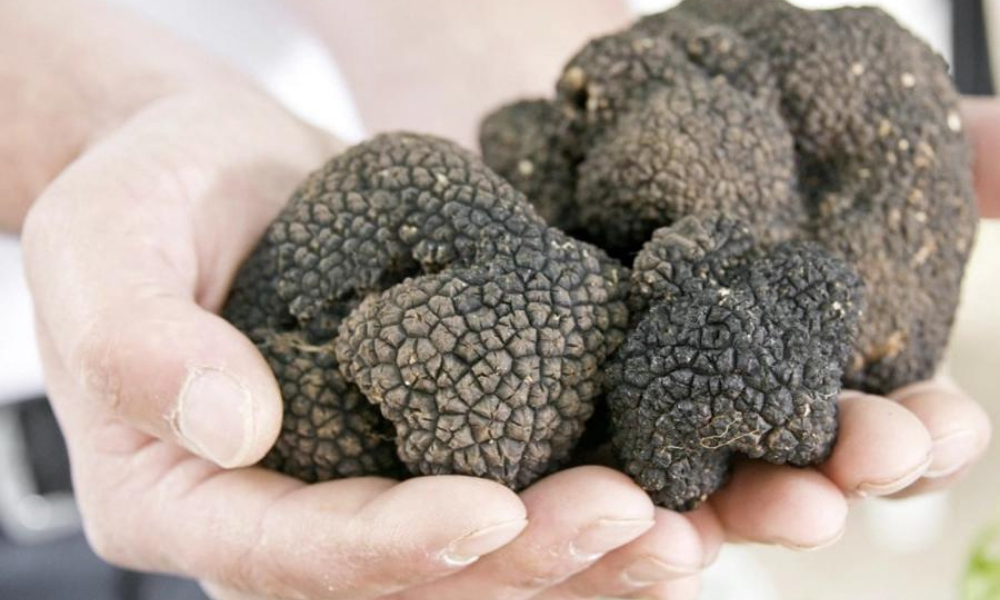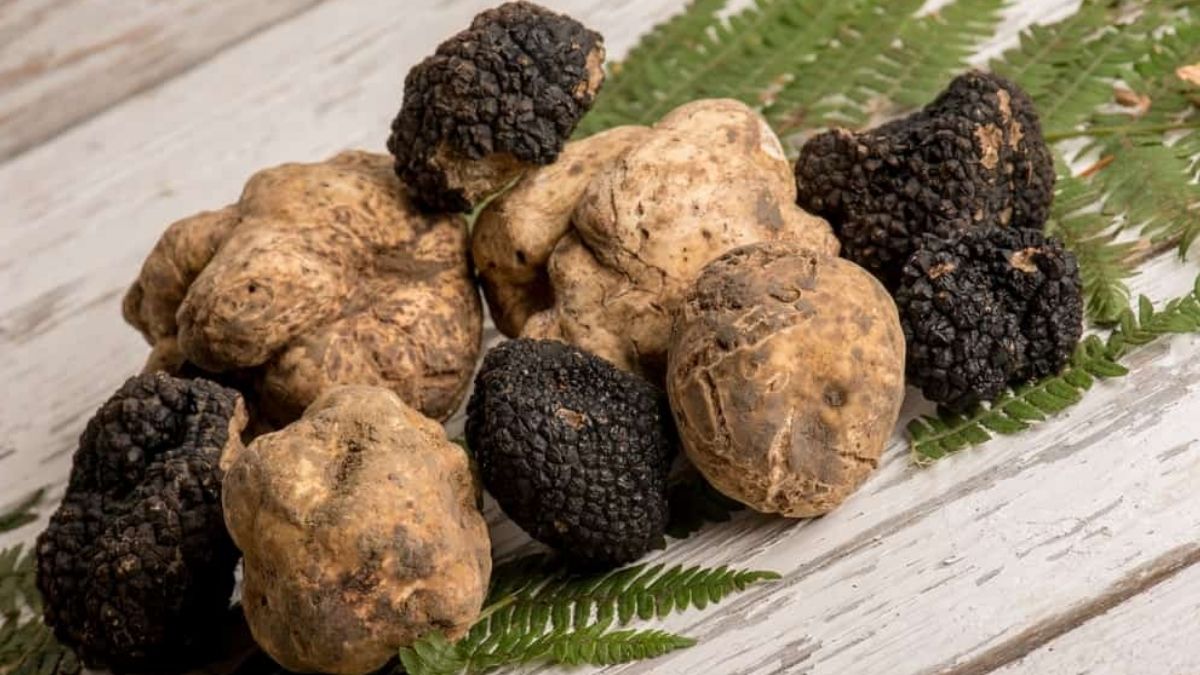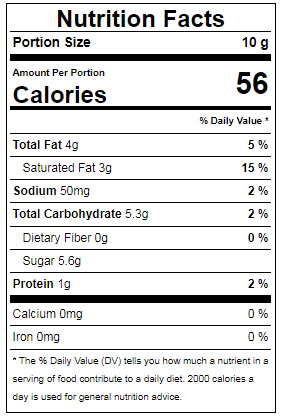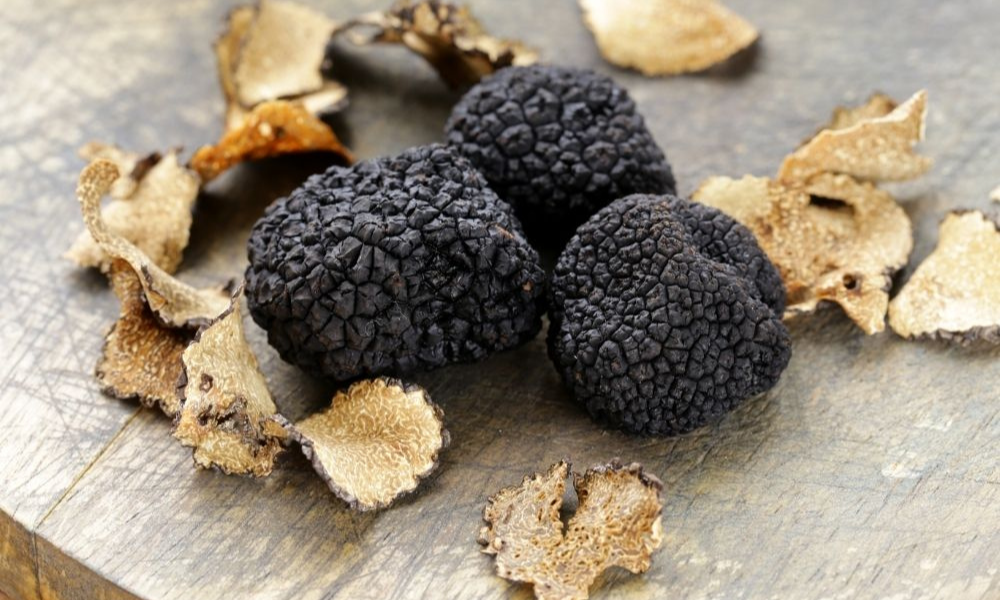Nutritional information on truffles. The daily values are calculated using a 2000-calorie diet. Your daily nutrient requirements may fluctuate depending on your age, gender, amount of physical activity, medical history, and other factors. All information on this site is provided for educational purposes only and should not be used as a substitute for medical advice. A truffle is a unique and delectable gourmet delicacy that is highly prized worldwide. Truffles are also among the most expensive foods on the planet, with prices ranging from hundreds to thousands of dollars per kilogram.
Before making any dietary modifications, please with your doctor. The nutrition labels on this site are mainly for illustrative purposes. Food photos may depict a similar or related product and should not be used to identify food. The nutritional value of a cooked product is calculated based on its weight. This page may include affiliate links to products from which we receive commissions to help fund the development and maintenance of this website. Usda National Nutrient Database data.
Truffle Nutrition Facts
Per 10 g serving, there are 56 calories. This portion has 4 grams of fat, 1 gram of protein, and 5.3 grams of carbohydrates. The latter comprises 5.6 grams of sugar and 0 grams of dietary fiber, with the remainder consisting of complex carbohydrates. Truffles provide 3 g of saturated fat per 10g serving.
What is Truffle?
Truffles are a type of underground mushroom belonging to the Tuber genus, and many of them are highly prized for their flavor and culinary applications. Even though not everyone appreciates mushrooms, truffles have a distinct and exquisite flavor that is well represented in French cuisine. Most truffle cultivars have a symbiotic association with specific tree species, ranging from oak and hazelnut to pecan and beech.
Truffles are the spore-producing sections of a Tuberaceae edible fungus that dwells underground, particularly among tree roots in damp woodlands. They are a mushroom species that range in size from approximately the size of a walnut to the size of a fist. Truffle hunters utilized pigs to find and dig up wild truffles since they grow naturally around tree roots. Today, carefully trained dogs are used because pigs devour most of the truffles they find, whereas dogs may be better educated.
Truffles are prized for their flavor and aroma, but they’re hard to come by, and once harvested, they quickly lose their power, making them one of the most costly meals on the planet. Some truffle variants can fetch as much as $2,000 per pound. Truffles are becoming more and more cultivable, and the procedure entails inoculating young trees with truffle fungus spores and planting them in orchards. Today, truffle orchards like these products up to 80% of all French truffles.
What are the Health Benefits of Truffles?
Truffles are high in antioxidants, which help fight free radicals and protect your cells from oxidative damage. Antioxidants are vital for many areas of your health, according to research, and may even be connected to a lower risk of chronic diseases like cancer, heart disease, and diabetes.
People in Africa and the Middle East use truffles to treat skin and eye issues. However, it is unknown how well they operate.
According to some research, a potent truffle extract may:
- Lower cholesterol
- Control blood sugar
- Protect your liver from damage
- Reduce inflammation throughout your body
- Fight bacterial infections
- Help prevent cancer
Keep in mind that the amount of truffles you eat is much smaller, so it’s unlikely to have that impact.
How to Prepare and Eat Truffles?
Within ten days of being picked, truffles begin to decay. Boiling or freezing them to make them last longer is not a smart idea. The texture of a truffle is ruined by freezing, while the flavor is zapped by boiling. As soon as you acquire your truffles, clean them. Cut off any troublesome areas, brush off the dirt, and rinse and blot gently. Cover your truffles with a dry paper towel and preserve them in the fridge until ready to use.
The odor and flavor of truffle are so potent that a small amount goes a long way. If you grate or scrape minor amounts onto your food immediately before eating, you’ll receive a lot of taste. Eggs, pasta, rice, sauces, chicken, and fish all benefit from the addition of raw grated truffle, and it can also be incorporated into olive oil or butter. Although truffle-flavored oil, pasta, and even potato chips are available, they do not contain actual truffles. Due to the short shelf life of truffles, commodities with a long shelf life rely on artificial truffle taste. One way to keep truffles for later use is to grate them into butter and freeze minor amounts.
What do Truffles Taste Like?
While the flavor and aroma of truffles vary depending on the type, they always have a mushroomy, musky, oaky, nutty, earthy flavor. White truffles are slightly spicier, with a flavor and aroma resembling garlic or shallots, whereas black truffles have chocolatey undertones. Their texture is solid, compact, and spongey.
Furthermore, because of the unique environment in which each truffle is cultivated, including the unique soil features, the sorts of trees they’re linked with, and the season in which they’re collected, truffles from different world regions will have subtly distinct smells and aromas.
Where to Buy Truffles?
Fresh truffles can be challenging to come by, both because they are intrinsically scarce and perishable. Fresh truffles are best obtained by foraging them yourself or purchasing them from someone who does. A few companies sell fresh truffles by the ounce on the internet. However, their stock is limited and seasonal, and ordering from them will almost always require paying for overnight or two-day shipping, which adds to the high cost.
Although there is no way to keep the flavor of truffles, some specialty food stores sell preserved truffles, usually packed in brine, although the flavor of truffles cannot be preserved, so what you’re getting is more of a salty mushroom than a truffle. Frozen truffles are also available, although they have lost a lot of their flavor and scent.
How to Use Truffles?
There are many beautiful ways to use truffles, such as the following:
- Creating truffle oil as an unforgettable drizzle or topping
- Distilling a flavor-based vodka
- Making butter, honey, and various other sauces
- Pairing it with butter and cheese sauces
However, it is always advisable to utilize truffles sparingly due to their high price. When used in excess, the robust flavor can dominate a meal.
How to Cook With Truffles?
Because the flavor components in truffles are highly volatile, they evaporate and vanish quickly when heated. As a result, cooking truffles are extremely rare. Instead, shave them thinly over the top of the hot, cooked meal before serving, allowing the flavors and fragrances to be activated by the food’s heat. White truffles are particularly susceptible to this.
To bring out the truffle’s distinct flavor, serve it with items that are usually simple in flavors, such as eggs or spaghetti. They can also be grated into sauces made with wine or cream. Thin shavings can be shaved onto cooked meats like beef, hog, boar, or deer before serving or inserted under chicken skin before roasting.
The common thinking about black truffles is that extremely delicate cooking, such as tossing them into a sauce and heating them at the end of cooking, will enhance their flavor. Truffles are used sparingly since their strong perfume, and distinct flavor might overpower if used too heavily and their high cost.
How to Store Truffle?
Fresh truffles have a short shelf life. They start to lose their flavor and perfume the instant they’re dug up out of the ground, and they’ll be entirely rotten in five days. Fresh truffles should be used within a few days; in the meantime, store them in an airtight container in the fridge with some dry rice to keep the surface from becoming soggy due to moisture loss. Because the truffle will exude its perfume continuously until it’s gone, whether it’s in a container or not, the container is primarily for the other goods in your fridge.
Conclusion
Due to their exquisite flavor and scarcity, truffles are one of the culinary arts’ most legendary and luxury ingredients. Their notoriety is enhanced by the fact that they are pretty pricey. They are seasonal and are commonly used in fine dining in recipes such as pasta and risotto. They can also be added to fresh salads. The black truffle, also known as the Perigord truffle after the southwestern French region, and the white truffle, which comes from Piedmont in northern Italy, are two of the most popular. The summer truffle is also appreciated, sometimes known as the Burgundy truffle. Pine truffles, white truffles, and garlic truffles are some of the other edible truffles.
Truffle oil, which is created by infusing oil with one of the taste compounds found in truffles, is used by some chefs. Truffle oil, even the kind with particles of truffle in the bottle, isn’t created with truffles, and the flavor of truffle oil isn’t the same as the flavor of actual fresh truffles. It is, nevertheless, a tasty component that is significantly less expensive than real truffles.



